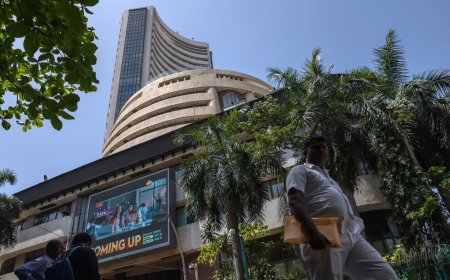BYD Shares Extend Losses Amid Aggressive Price Cuts and Sales Pressure
BYD shares continue to slide as aggressive price cuts raise concerns over sales growth and profit margins. Investors question the sustainability of its market dominance amid EV industry headwinds.

BYD Shares Extend Losses as Price Cuts Throw Spotlight on Sales
In the ever-evolving world of electric vehicles (EVs), Build Your Dreams (BYD), China's homegrown EV titan, is once again in the spotlight — but this time for the wrong reasons. BYD shares have continued their downward trajectory this week, extending losses amid intensifying scrutiny over its aggressive price-cutting strategy. Investors and analysts alike are asking the critical question: Is BYD sacrificing long-term profitability for short-term sales volumes?
This article dissects the multi-layered implications of BYD’s pricing decisions, how it is shaping investor sentiment, and what this could mean for the EV landscape both in China and globally.
The Latest Market Reaction: Shares Under Pressure
As of the latest trading session, BYD shares have fallen by over 15% from their May highs, a significant correction driven primarily by fears that the company’s deep price cuts across multiple models are eating into profit margins. The downturn follows a flurry of price adjustments BYD introduced earlier this month to fend off mounting competition and clear inventory amid weaker-than-expected domestic sales figures.
The Hong Kong-listed shares dipped nearly 4% in intra-day trading today, while its Shenzhen A-shares mirrored the fall, closing down 3.6%. The consistent selling pressure has now raised alarm bells across institutional desks that once held BYD as a core growth holding in the global EV playbook.
A Price War with Consequences
BYD’s move comes amid a brutal price war in China’s saturated EV market, led by Tesla and followed by over a dozen domestic brands like NIO, XPeng, and Li Auto. While price cuts are not new in the automotive world, BYD’s deep discounting—up to 10% off on its Dolphin, Qin Plus, and Song Plus models—has triggered serious concerns about demand sustainability and competitive desperation.
BYD argues the price cuts are part of a “market repositioning strategy” aimed at democratizing electric mobility. However, market observers suggest that the decision might have been prompted more by flagging demand than a calculated plan.
Margin Erosion Ahead?
According to analysts at Nomura and Morgan Stanley, BYD’s gross margin in its passenger vehicle segment could fall from 19.5% to below 17% by Q3 2025 if the pricing pressure continues. Lower profit margins on top-selling models could dent earnings growth in subsequent quarters, despite rising unit sales.
Sales Data: Not Matching the Hype
BYD’s April and May sales numbers have revealed some worrying trends. While the company managed to ship 276,075 units in April, this represented just a 1.5% month-on-month increase—a sharp contrast to its exponential growth last year. Additionally, export figures are growing but at a slower pace, with European and Southeast Asian markets still in early stages of adoption.
Moreover, demand in China—its core market—appears to be plateauing, with consumers overwhelmed by choices and increasingly price-sensitive. Even generous subsidies and low-interest financing haven’t been enough to turbocharge domestic demand.
BYD’s Growth Strategy: Global or Gamble?
As domestic demand stabilizes, BYD has turned to global expansion to fill the growth gap. The company has increased its export footprint, particularly in Latin America, Thailand, and parts of Europe. However, building global brand equity takes time, and regulatory challenges in foreign markets can be significant hurdles.
In Germany and the UK, for instance, BYD is still viewed as an emerging challenger rather than a trusted auto brand. European carmakers are lobbying for trade protections, and the EU has recently launched anti-subsidy investigations against Chinese EV imports—BYD included.
If tariffs are imposed, BYD's export margins could face a new layer of stress.
Investor Sentiment: From Euphoria to Realism
There was a time—not too long ago—when BYD was touted as a Tesla-beater. Backed by Warren Buffett’s Berkshire Hathaway and armed with vertical integration capabilities unmatched in the EV world, BYD seemed invincible. But the current market mood has turned more cautious.
Fund managers are revisiting their China exposure amid a weakening yuan, economic slowdown, and growing geopolitical tensions. BYD, once the poster child of China’s EV rise, is now being reassessed for its actual earnings potential in a world of narrowing margins and rising costs.
Institutional data shows that foreign holdings in BYD have dropped by 8.2% in Q2 2025, with most outflows heading toward safer bets in the US and European auto sectors.
BYD's Response: Silence Isn’t Helping
Interestingly, BYD’s management has remained relatively silent amid the mounting pressure. There have been no official statements addressing the share price decline or clarifying the rationale behind the price cuts. This communication vacuum has only worsened market anxiety.
Analysts believe a comprehensive investor update or strategic roadmap is necessary to restore confidence. Clearer messaging about product pipeline, margin protection strategies, and global plans could help arrest the share freefall.
The Bigger Picture: Lessons from the EV Sector
BYD’s struggles are a microcosm of the broader EV sector’s growing pains. The electric car industry is no longer in its infancy. It’s maturing—and with maturity comes complexity. Supply chain dynamics, battery raw material volatility, government policies, and tech innovation cycles all play crucial roles in determining long-term viability.
EV Isn’t a One-Winner Game
Contrary to early expectations, the EV market isn't consolidating around one or two giants. Instead, it's fragmenting. Multiple regional players with different strengths are carving out their niches. In such a landscape, pricing wars can damage not just individual companies but the entire sector’s profitability and investor sentiment.
What's Next for BYD?
To regain investor trust and stabilize its stock price, BYD must now walk a delicate tightrope:
-
Balance affordability with margin protection
-
Communicate proactively with investors
-
Accelerate global market penetration without overspending
-
Continue to innovate in battery and AI-assisted driving tech
Moreover, BYD must differentiate its brand not only as a low-cost EV maker but as a trusted, reliable, and tech-forward mobility partner.
A Crucial Inflection Point
The recent slump in BYD’s share price is not just a reaction to price cuts—it’s a referendum on the company’s entire strategic direction. As the EV market enters a more competitive and cost-sensitive era, BYD must recalibrate its approach or risk losing its hard-earned leadership position.
For investors, the road ahead is full of caution signs. But with challenges come opportunities—for those who can sift through the short-term noise and bet on long-term resilience. BYD may still have the tools to thrive, but its next few moves will determine whether it remains a market leader—or becomes a cautionary tale in EV history.
What's Your Reaction?
 Like
0
Like
0
 Dislike
0
Dislike
0
 Love
0
Love
0
 Funny
0
Funny
0
 Angry
0
Angry
0
 Sad
0
Sad
0
 Wow
0
Wow
0












































































